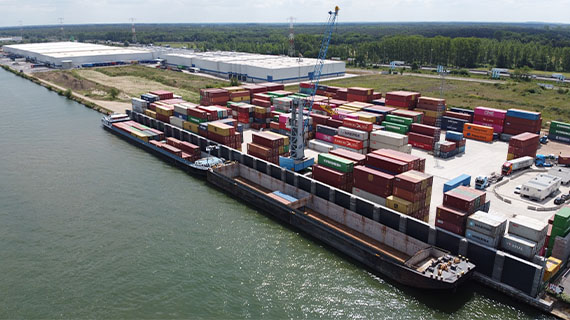OUR GLOBAL FREIGHT EMISSIONS (SCOPE 3)
We track the journey of each Superdry garment from factory to consumer. Millions of Superdry garments travel great distances each year to reach their final home. The decision relating to how these garments are transported significantly impacts their overall carbon footprint.
Despite the fact that we have reduced our normalised Scopes 1, 2 and 3 emissions by 41%, moving our products around the world still contributed to more than 26,000 tonnes of CO2e emissions in FY21. The same amount of carbon used for over 4,900 round trip flights to New York.
Sourcing our products
Our sourcing decisions can have a significant impact on the product journey, and we are now adopting a more local approach, ensuring that our products are produced close to their final destination wherever feasible.
Airfreight
Through improved planning and discipline, we have reduced airfreight over the last two years by 52% to get our products from factory to distribution centre (‘DC’), saving more than 16,000 tonnes of CO2e each year.
We have now agreed to cap airfreight at 2%, down from more than 11% in 2019. This is a vital move in reducing our emissions, as carbon emissions from airfreight are 89 times higher than the equivalent by seafreight.
Barges
Garments that are headed to our European DC in Belgium, known as ‘The Baron’, (servicing all European stores and ecommerce customers, 45% of all product) arrive on the Belgian coast where they are then transported inland to our warehouse. In 2020 we collaborated with our local logistics partners to get the barges back on the canal, reducing our use of road transport. Our DC is ideally positioned along the canal route to facilitate fast and safe unloading of stock. 39% of our garments now take the final leg of their journey by barge, avoiding congestion and delays, while simultaneously reducing the CO2 emissions from these journeys by 56%. This is because emissions from barges are more than nine
times lower than the equivalent on road.

Intermodal
In Turkey we have introduced an intermodal route for delivering to our UK or European DCs. A mix of sea and rail minimises carbon and reduces our reliance on road transport, which emits nearly five times more carbon comparatively. 500,000 garments moved this way in FY21, reducing emission by 47 tonnes.
We are now starting to work with our logistics partners to establish a clear, transparent and trackable roadmap to net zero through reducing, converting and offsetting.

